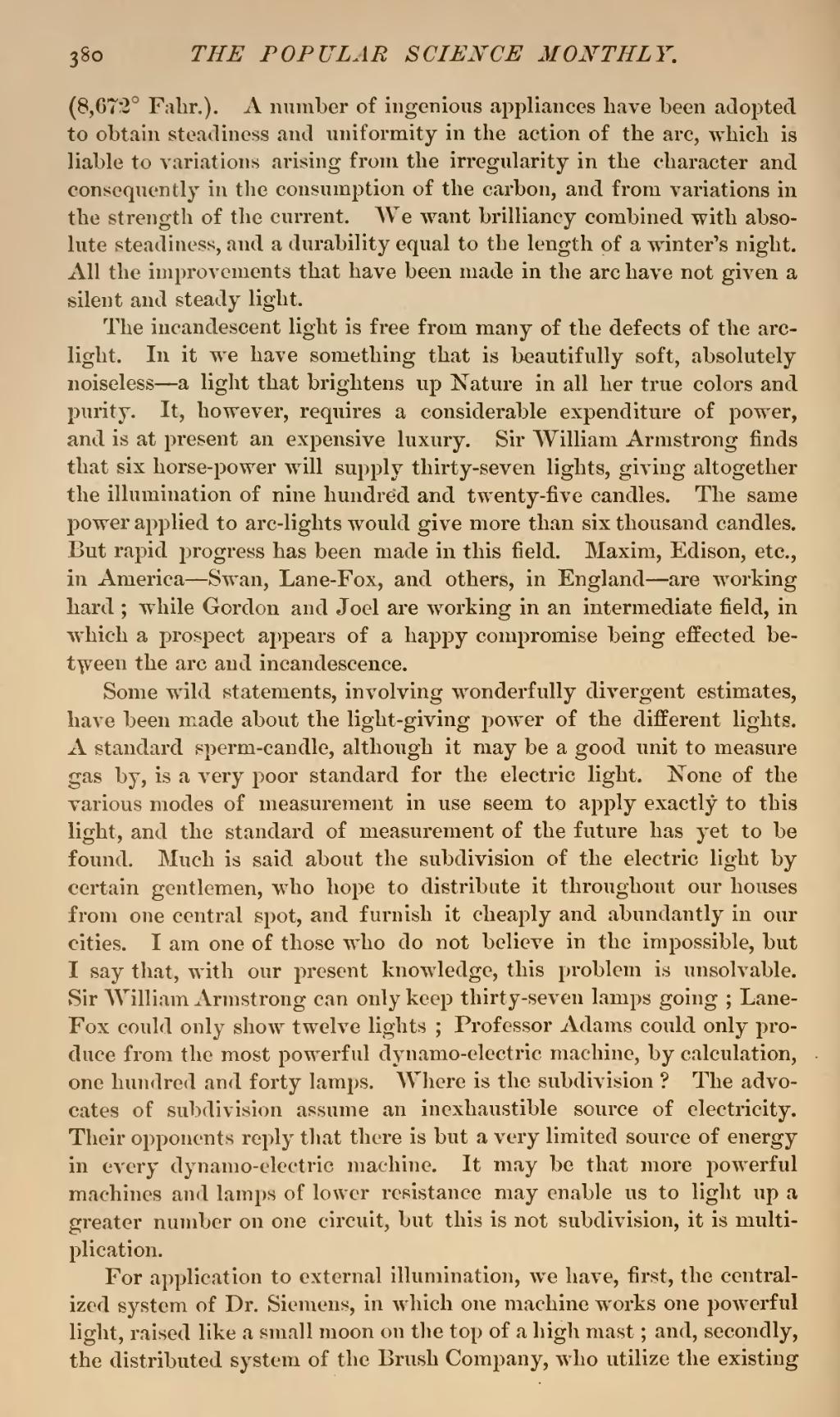(8,672° Fahr.). A number of ingenious appliances have been adopted to obtain steadiness and uniformity in the action of the arc, which is liable to variations arising from the irregularity in the character and consequently in the consumption of the carbon, and from variations in the strength of the current. AVe want brilliancy combined with absolute steadiness, and a durability equal to the length of a winter's night. All the improvements that have been made in the arc have not given a silent and steady light.
The incandescent light is free from many of the defects of the arc light. In it we have something that is beautifully soft, absolutely noiseless—a light that brightens up Nature in all her true colors and purity. It, however, requires a considerable expenditure of power, and is at present an expensive luxury. Sir William Armstrong finds that six horse-power will supply thirty-seven lights, giving altogether the illumination of nine hundred and twenty-five candles. The same power applied to arc-lights would give more than six thousand candles. But rapid progress has been made in this field. Maxim, Edison, etc., in America—Swan, Lane-Fox, and others, in England—are working hard; while Gordon and Joel are working in an intermediate field, in which a prospect appears of a happy compromise being effected between the arc and incandescence.
Some wild statements, involving wonderfully divergent estimates, have been made about the light-giving power of the different lights. A standard sperm-candle, although it may be a good unit to measure gas by, is a very poor standard for the electric light. None of the various modes of measurement in use seem to apply exactly to this light, and the standard of measurement of the future has yet to be found. Much is said about the subdivision of the electric light by certain gentlemen, who hope to distribute it throughout our houses from one central spot, and furnish it cheaply and abundantly in our cities. I am one of those who do not believe in the impossible, but I say that, with our present knowledge, this problem is unsolvable. Sir William Armstrong can only keep thirty-seven lamps going; Lane Fox could only show twelve lights; Professor Adams could only produce from the most powerful dynamo-electric machine, by calculation, one hundred and forty lamps. Where is the subdivision? The advocates of subdivision assume an inexhaustible source of electricity. Their opponents reply that there is but a very limited source of energy in every dynamo-electric machine. It may be that more powerful machines and lamps of lower resistance may enable us to light up a greater number on one circuit, but this is not subdivision, it is multiplication.
For application to external illumination, we have, first, the centralized system of Dr. Siemens, in which one machine works one powerful light, raised like a small moon on the top of a high mast; and, secondly, the distributed system of the Brush Company, who utilize the existing
